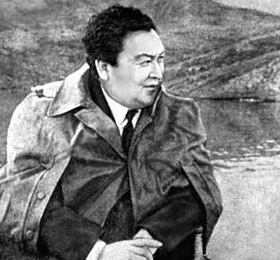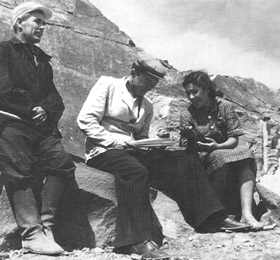Amir Bralin
Specialization: Physics. Internship: The University of Arizona, USA.
 Now Amir is 21. At his 17 he realized that he wanted to do physics and entered the University. How come that the student from Aktobe happened to get his intership at the laboratory of the Chemistry and Biochemistry Department of the University of Arizona?
Now Amir is 21. At his 17 he realized that he wanted to do physics and entered the University. How come that the student from Aktobe happened to get his intership at the laboratory of the Chemistry and Biochemistry Department of the University of Arizona?
When did you understand that physics was more than just a hobby for you
In my school time. The process was long. In general, it took me as long as 5 years, starting from the 7-th grade. There were a lot of interesting and useful along the way. I got acquainted with physics as soon as I started my studies in the Kazakh-Turkish Lyceum. Me and my mates were invited to take part in Physics Olympiad in Almaty. In high school I would already attend national and international physics competitions. By the graduation I clearly understood the general content of physical science and that I was going to apply to the Department of Physics.
How was the Foundation grant competition for you?
The first stage was traditional — it was not the first time I applied for the competition. But when we were gathered for the team games in the 2nd stage of the competition, I started to worry. I had cool guys around with their own special advantages. The topics of their student researches were very diverse. And I almost lost my courage when everything was over: I did not believe that I would stand such competition. But just a few days later my friends congratulated me on my success.
What did you do at the internship? And why was the physicist in the chemical lab?
It’s simple. Professor Ludwik Adamowicz‘s laboratory, where I happened to come is really located at the Department of Chemistry of the University of Arizona. But it deals with physical problems-studying properties of atoms and molecules — new and old, already known to us. This is a common work for interdisciplinary areas of modern science. My task during the internship was to improve the existing algorithms for accurate calculations of energy and other important quantities of atoms. Over the past 10-20 years, measuring methods for those properties have become ultra-precise. So in order to bring a balance between the theory and experiment I needed to make atom models used in the calculations more complicated and that was my job.
What are the outcomes of the internship?
Our calculations turned out to be successful. The algorithms worked according to the tests (we compared our results with recent experimental researches in the field of spectroscopy). And as a result, our scientific work was accepted for publication in the American scientific journal Physical Review A. Our article was published in January 2018. For me it was an experience in working on a supercomputer at the University of Arizona. I saw how PhD students’ life is arranged. At the faculty’s events I have learned a lot about chemists and broadened my horizons. I also visited the University libraries, where I could find books in different languages and on a variety of areas of knowledge. Yes, there were libraries, not just a library. Every big American University has many of them. And when you visit them for the first time, they catch your imagination.
What’s next, Amir?
So, I got a scientific article in a popular journal. The experience I got there and recommendations of Professor Adamowicz have repeatedly increased my chances to be enrolled to the Graduate School in the US. And recently, I was enrolled to the Purdue University for doctoral programme supervised by Professor Chris Greene, a well-known scientist in the field of physics of atoms. So, as soon as I get my bachelor’s degree, I will continue my studies there.
3.03.18, Stories
Seen by: 726




